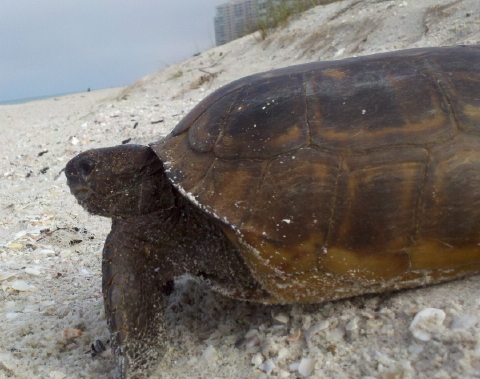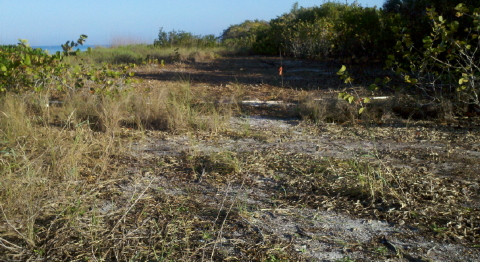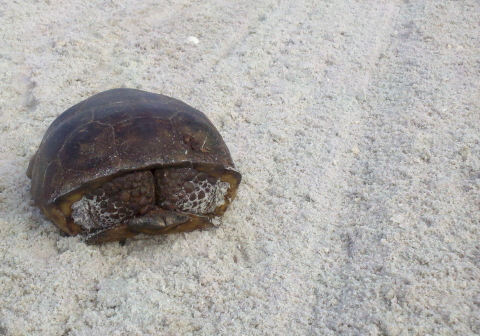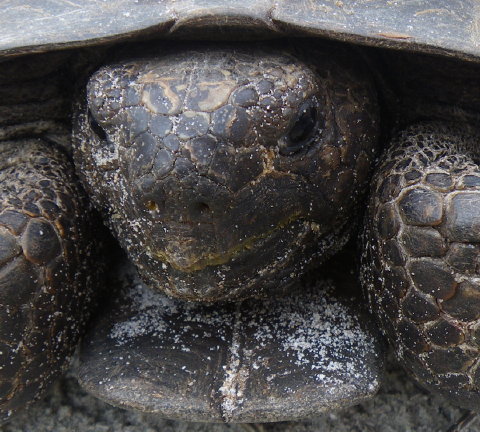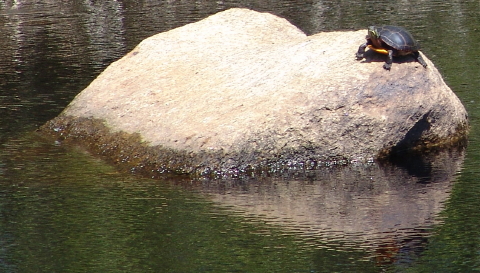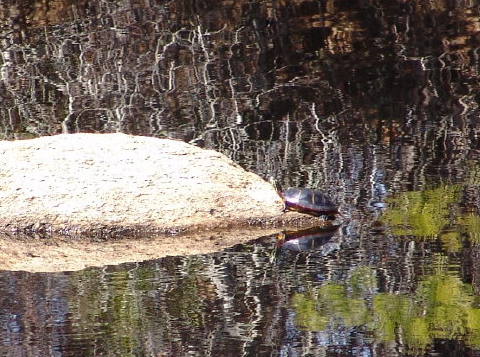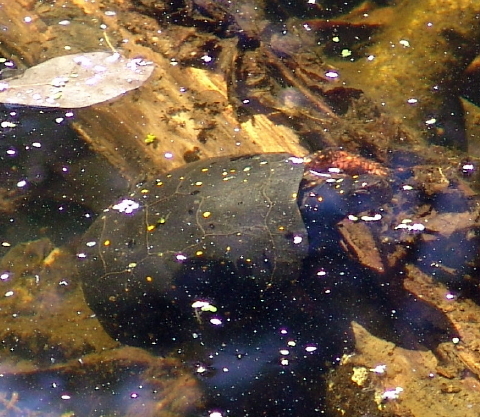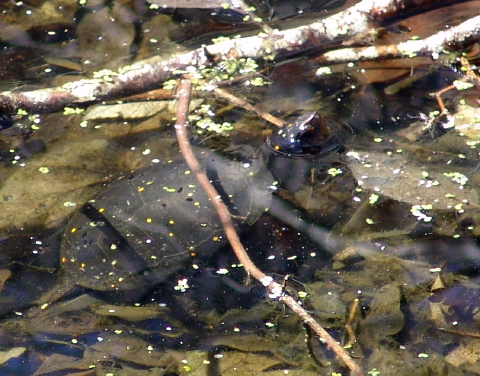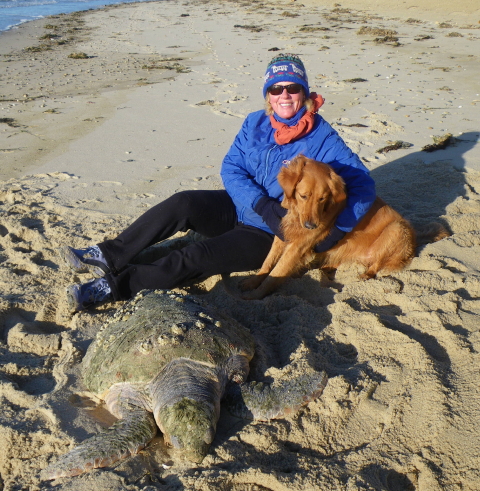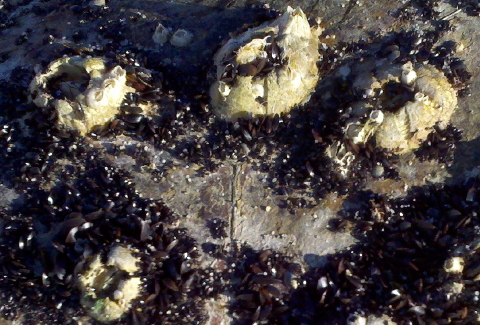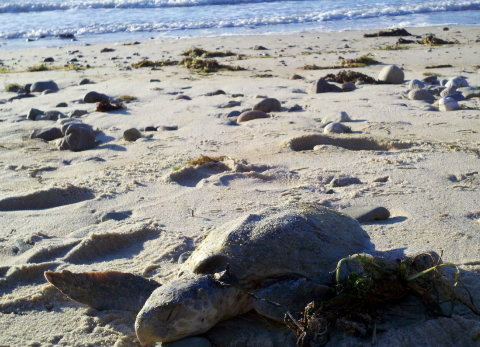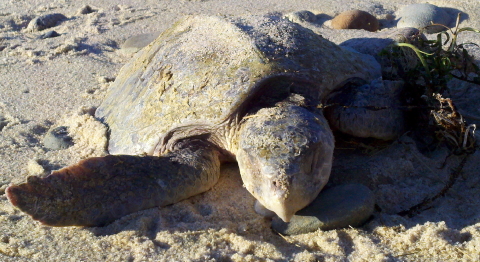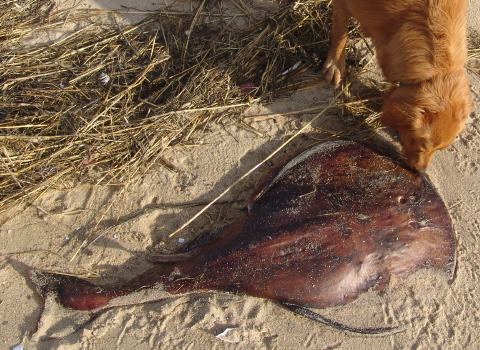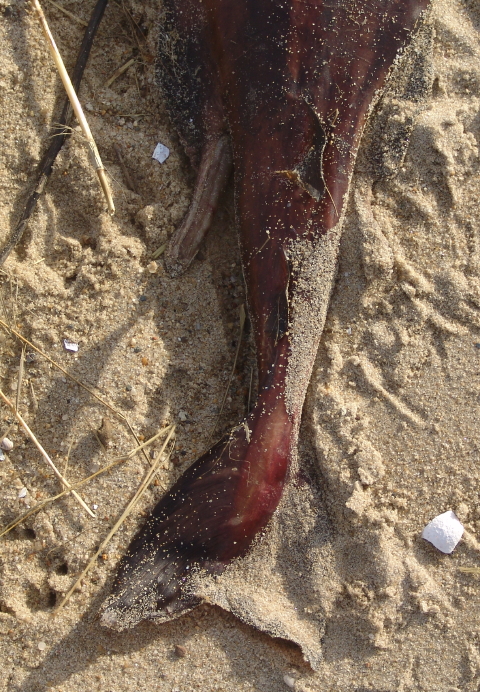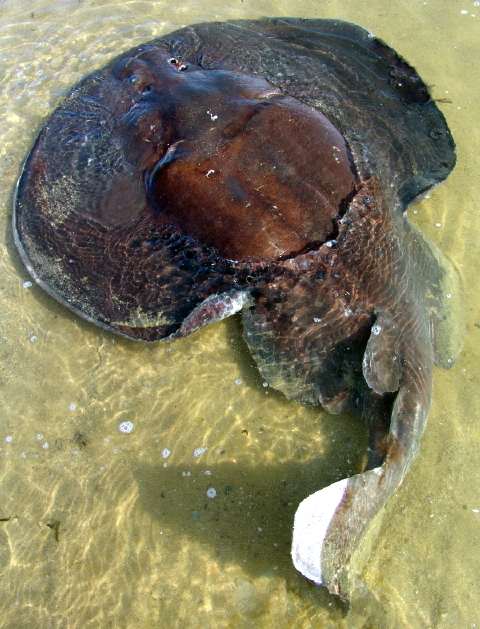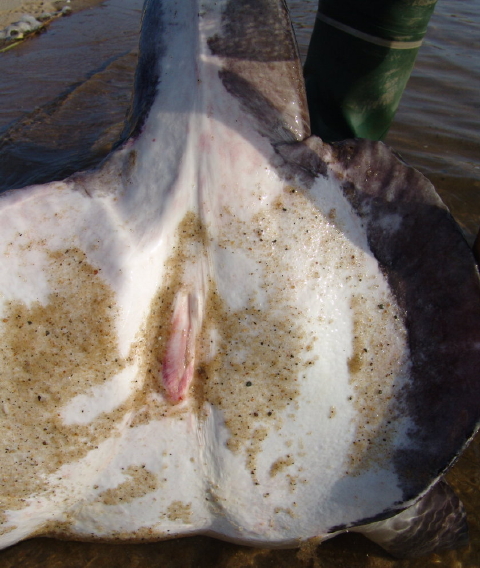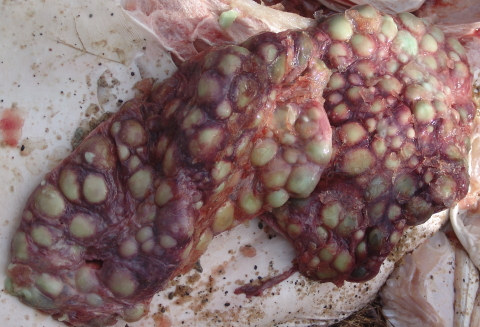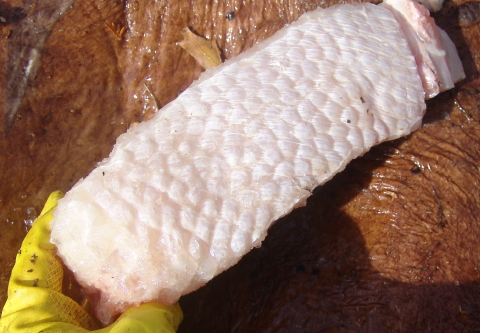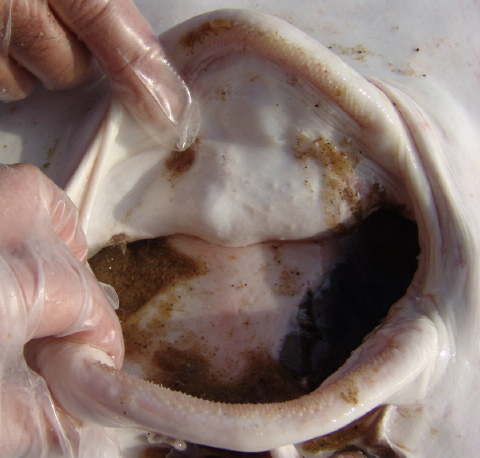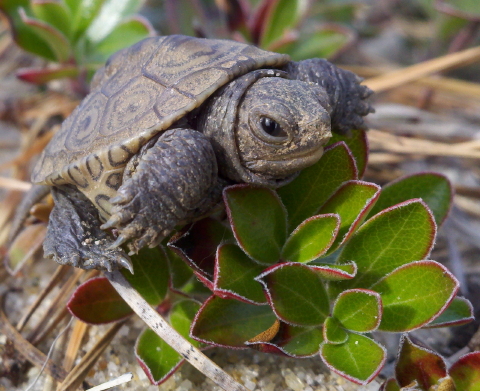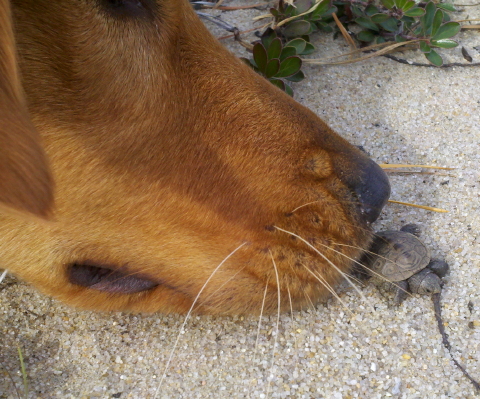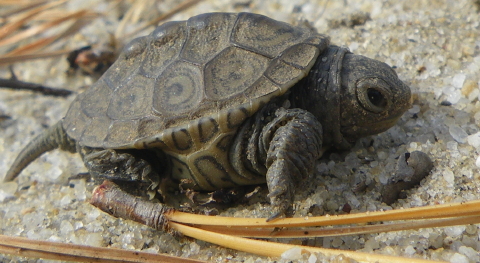Gopher Tortoise Surveys Vanderbilt Beach
Gopher tortoises (Gopherus polyphemus) along the Gulf Coast of Naples, Florida occupy some of the richest, most coveted terrain in the world. Digging burrows in the shadow of towering waterfront highrises, Vanderbilt Beach tortoises live on the jagged edge of luxury and extinction. No matter how loudly humans declare fascination with exotic wildlife, they can’t seem to tolerate neighbors that restrict unbridled development of every inch of shoreline.
Vanderbilt Beach at Sunrise
A late February morning finds Turtle Journal catching the sunrise on Vanderbilt beach in Naples as we explore Gulf Coast fauna and check out the few remaining tortoise burrows wedged precariously between luxury condo skyscrapers.Â
Gopher Tortoise Competing for Ritzy Domain
Recognizing a kindred spirit, a male golpher tortoise strolls out to meet the Turtle Journal team. Near 80-degree warmth has piqued his interest in exploring his surroundings for food and … of course … love. As burrows are displaced by development, the challenge of finding a mate grows more difficult. As the human urge to “control” and “neaten” natural vegetation around the burrows, foraging too becomes more difficult.
Male Gopher Tortoise
This young healthy male measured about 12 inches long …
Male Gopher Tortoise Carapace
… from nuchal at the tip of his domed carapace to the rear. A few, maybe ten, annual growth rings can still be discerned in his costal scutes, but most annuli have been obscured by wear and tear.
Male Gopher Tortoise Plastron
The maleness of a gopher tortoise can be identified by concavity … hard to verify in the above two-dimensional photograph … in the center posterior of his plastron and by the gular protrusion at the plastron anterior under his chin.
Humans Remove “Invasive” Vegetation around Burrows
During Turtle Journal’s February 2012 inspection of Vanderbilt habitat, we noticed that people had begun to clear vegetation from around these tortoise burrows. When asked what they were doing, workers said that they were removing “invasive” vegetation. While we can’t and don’t dispute this claim, the clearing did seem more global than targeted against specific species. We wonder how tortoises will fare on these largely denuded sites and hope that seasonal growth will quickly restore forage.
Tortoise Disturbed Crossing Beach “Highway”
Another challenge confronting these gentle reptiles on the Gulf Coast is the constant vehicular traffic along the luxury beachfront. Whether “sweeping” sandy beaches clear of natural wrack each morning or simply racing up and down Vanderbilt Beach in a frentic effort to emulate Indy car drivers, humans disturb roaming tortoises with motion, noise and tire ruts.
Vanderbilt Beach Gopher Tortoise
Turtle Journal cherishes its visit with Florida’s gopher tortoises each winter and hopes that these humble reptiles can survive the insatiable human appetite to monopolize the Gulf Coast beach.
